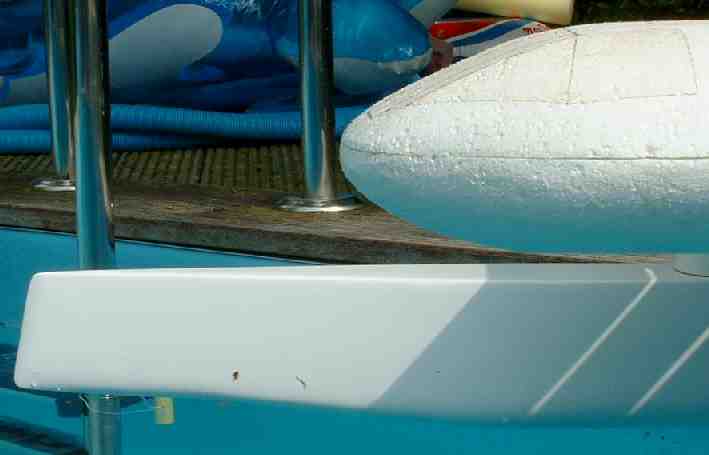|
||
|
WHEN DESIGNING A SOLAR POWERED BOAT IT IS IMPORTANT TO GET THE MOST OUT OF A HULL:
It has been established that at low speeds frictional resistance is the greater component of hull drag. As speeds rise (above a speed/length ratio of 1.05) wave making drag becomes the predominant force. See our page on speed/length calculations.
As a boat moves through the sea it pushes water aside - in doing so making waves - that much is obvious. If we investigate further and look at the pattern a hull generates as it moves through calm water you might identify 3 distinct wave patterns. The first set of pressure waves runs diagonally out from the bow. A fine angle of entry reduces the bow wave considerably. The second wave runs out less visibly from the stern. However a third more important set, runs along the vessel's side which, depending on the speed of travel, produces a crest of water at the bow lifting the boat, followed by a trough into and then another crest, etc. The faster a boat moves, the bigger the crest lifting the bow out of the water.
On this page we are concerned with how the bow enters the water. If it can slice into a wave creating minimal resistance, then that will improve the ability of the vessel overall and set the mood of the waves the hull creates.
On a big boat there may be several crests at the bow ending at the stern. It takes power to move so much water to produce a wave. The heavier a craft, the more water will have to be moved to pass through, in terms of simple drag: the wetted area or pipe resistance (as in water in a hose pipe). The distance between wave crests is governed by boat speed. Any type of boat from canoe to supertanker makes the same length of wave at the same speed. Only the wave size alters in line with the vessels weight and form. On high speed vessels that rise out of the water, or plane, the above may to some extent be overcome.
Fine entry hull angle slices into waves effortlessly
Length plays a vital part in resistance calculations: At the same speed/length ratio boats of similar form will have roughly equal resistance per ton. That is to say a 25 footer at 5 knots; a 49 footer at 7 knots; and an 81 footer at 9 knots. All of these examples will would require the same horsepower per ton - though speed has nearly doubled. Clearly then a Solar boat with limited power should be long and thin to gain the maximum performance. We should also consider that the shape giving the least wetted area is the arc of a circle, but that such a shape is not practical except in multihulls. That is another reason why Solar Navigator is at the moment a catamaran design.
|
||
|
This
website
is Copyright © 1999 & 2005 NJK.
The bird |
||
|
SOLAR CARS SILVER-EAGLE LIGHTNING-ROD WHITE LIGHTNING BUCKEYE BULLET E=MOTION BLUEBIRD ELECTRIC 3 |
